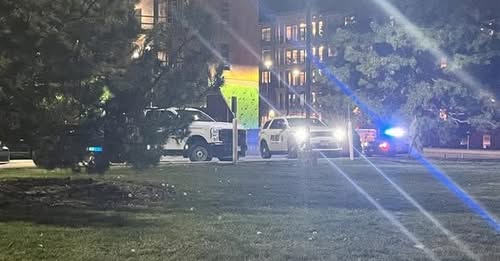The Nightmare Call: How a False Threat Paralyzed the U of U Dorms
The Terror in the Halls: Panic Fueled by a Lie
The University of Utah campus was thrust into agonizing fear as police swarmed a residential hall following reports of a stabbing and shooting threat. While authorities eventually classified the event as a malicious swatting incident—a false alarm designed to cause panic—the terror experienced by students sheltering in their dorm rooms was brutally real. For students, the sound of police sirens and the urgent, alarming campus messages instantly trigger memories of real-life tragedies. They were forced into silence, barricading their doors and texting frantic goodbyes, all based on a cruel lie. The psychological damage inflicted by these false reports is profound and lasting. It shatters the sense of security and transforms the very place students call home—their dorm—into a momentary cage of fear, a trauma that lingers long after the all-clear is given.
The Erosion of Safety: Trust on a Campus
The repeated incidents of threats and actual violence on college campuses across the nation have eroded the fundamental trust students place in their safety systems. When a severe threat—even a false one—sends police racing to a dorm, it validates the deepest anxieties of every student and parent. The incident, whether rooted in a drunken misunderstanding or a deliberate malicious call, highlights a terrifying vulnerability. Students come to campus seeking knowledge and community, but they are increasingly forced to train for worst-case scenarios. The trauma isn’t just the few hours spent in fear; it’s the realization that the line between a drill and a deadly reality is constantly blurring, shattering the academic focus and emotional well-being of the student body. The university now faces the complex task of rebuilding trust and fortifying safety measures against unseen, malicious actors.
Finding Solidarity: Healing the Collective Wound
In the aftermath of the lockdown, the path forward for the University of Utah community must be defined by solidarity and healing. The immediate threat may be gone, but the emotional scars remain. University safety advocates and counselors are now essential resources, helping students process the intense fear and anxiety caused by the false alarm. The community’s duty is to support one another, turning the shared trauma into a force for greater compassion and vigilance. While police pursue charges against the individual responsible for the swatting, the greatest victory is not just legal justice, but the emotional resilience of the student body. The experience must galvanize a renewed commitment to open communication and mutual care, ensuring that the students can reclaim their dorms as safe spaces for learning and living.

Leave a Reply